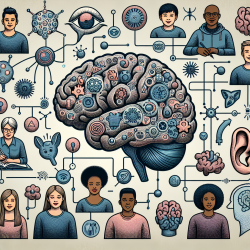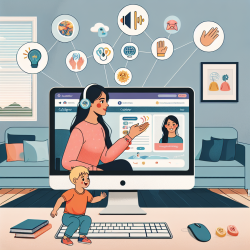Introduction
In the realm of speech-language pathology, understanding the neural mechanisms underlying social interactions is crucial, especially when working with adolescents. A recent study titled Social experience calibrates neural sensitivity to social feedback during adolescence: A functional connectivity approach provides insights that can enhance therapeutic approaches. This research explores how social experiences influence neural sensitivity to social feedback, offering valuable implications for practitioners aiming to optimize outcomes for adolescents.
Research Overview
The study investigates how family and peer experiences predict neural sensitivity to social cues in adolescent girls. By employing functional connectivity analyses, the researchers found that both high and low levels of adversity are associated with changes in brain connectivity. Specifically, the study highlights the role of the ventral striatum and amygdala in processing social reward and threat, respectively. These findings suggest that social experiences during adolescence can significantly shape neural responses to social feedback.
Implications for Practitioners
For speech-language pathologists, these findings underscore the importance of considering an adolescent's social background when designing interventions. Here are some actionable insights:
- Tailored Interventions: Recognize that adolescents with high or low adversity levels may exhibit different neural responses to social feedback. Tailoring interventions to address these differences can enhance therapeutic outcomes.
- Focus on Social Skills: Given the heightened neural sensitivity to social cues, interventions that focus on improving social skills and peer interactions can be particularly beneficial for adolescents.
- Parental and Peer Involvement: Involving parents and peers in the therapeutic process can provide a supportive environment that fosters positive social experiences, thereby influencing neural development positively.
Encouraging Further Research
While this study provides a foundational understanding of neural sensitivity to social feedback, further research is needed to explore the implications of these neural patterns for the development of psychopathology. Speech-language pathologists are encouraged to engage with ongoing research to stay informed about new findings that can inform their practice.
Conclusion
The study highlights the critical role of social experiences in shaping neural sensitivity during adolescence. By integrating these insights into practice, speech-language pathologists can better support adolescents in navigating social challenges, ultimately leading to improved communication outcomes. To delve deeper into the original research, please follow this link: Social experience calibrates neural sensitivity to social feedback during adolescence: A functional connectivity approach.










